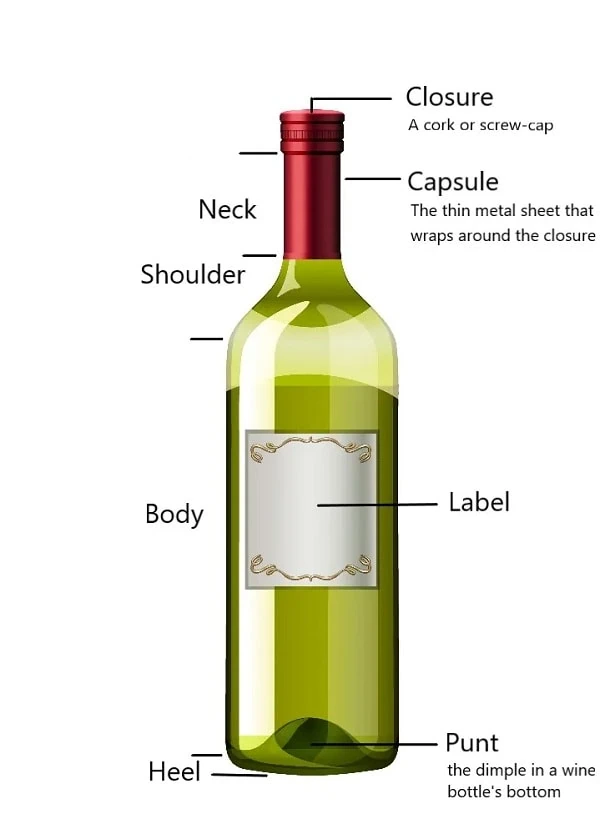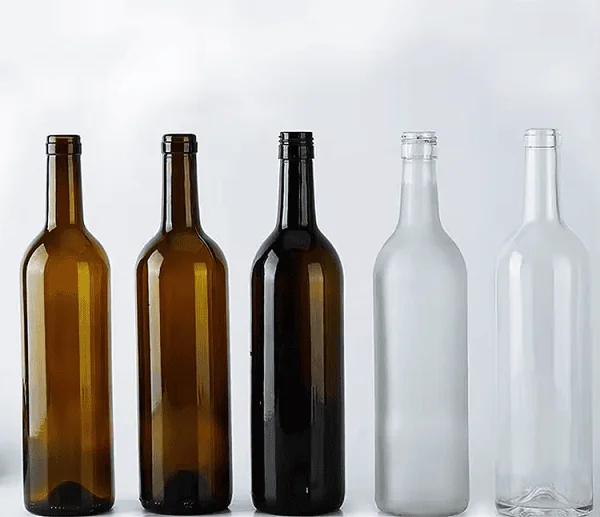Understanding the intricacies of wine bottle sizes, components, and dimensions can be quite complex. Each wine bottle boasts a unique structure, with its parts tailored to accommodate the specific characteristics of the wine it holds. Familiarizing oneself with these components not only enhances one’s understanding but also refines the art of pouring wine with precision and finesse.
Moreover, this knowledge holds significant importance for individuals involved in the wine industry or those aspiring to venture into winemaking. Partnering with a reputable custom glass bottle manufacturer is paramount to ensuring the production of top-quality bottles that meet industry standards.
The wine bottle comprises eight essential components, each serving a distinct purpose. Below, you’ll find detailed information about each of these components.

Closure
The closure, whether cork or screw-cap, is instrumental in preserving the wine by preventing air interaction. Factors such as oxygen permeability and desired wine life influence the choice between cork and screw-cap closures. Plastic wine bottle cap closures are also available to seal the wine after opening, offering additional preservation benefits.
Capsule
Wrapped around the closure, the capsule is a thin metal sheet that protects the cork from drying up and prevents wine from evaporating. Beyond preservation, capsules enhance the bottle’s aesthetics and contribute to hygiene standards.
Neck
Providing a secure grip, the slender neck of the wine bottle ensures ease of handling. The level of wine in the neck indicates the bottle’s integrity, with deviations suggesting potential cork issues or evaporation.
Shoulder
The sloping part just below the neck varies in shape and serves as a visual indicator of a bottle’s condition and storage history. Assessing shoulder characteristics aids in evaluating wine quality.
Body
As the largest part of the bottle, the cylindrical body holds the wine. Precise manufacturing ensures efficiency in producing bottles with consistent quality and dimensions.
Label
Displaying essential wine details, labels adhere to regulatory standards while showcasing brand identity. Front labels typically feature wine and brand specifics, while back labels include origin and volume details.
Heel
Situated at the bottle’s bottom, the heel provides stability, ensuring the bottle remains upright. Varying bottle shapes accommodate different wine types and storage needs.
Punt
The dimple at the bottle’s base, known as the punt, enhances structural integrity and aids in cooling wine. Its depth can vary, offering design flexibility and serving as a stylistic feature for sommeliers during pouring.
Conclusion

In conclusion, this artical offers a detailed exploration of wine bottle anatomy. With varying sizes and shapes, each bottle serves a distinct purpose, reflecting the unique characteristics of the wine it holds.
For those seeking a trustworthy glass container manufacturer, WXglass stands out as the premier choice. With over 26 years of industry expertise, WXglass offers customizable solutions tailored to meet individual needs. Their commitment to quality craftsmanship and extensive global reach ensures unparalleled service.
Furthermore, WXglass prioritizes glass purity, guaranteeing containers suitable for both storage and decoration purposes. Glass remains the optimal material for producing exceptional wine bottles, combining practicality with aesthetic appeal.
Contact us today to discover the perfect blend of functionality and style for your packaging needs.

